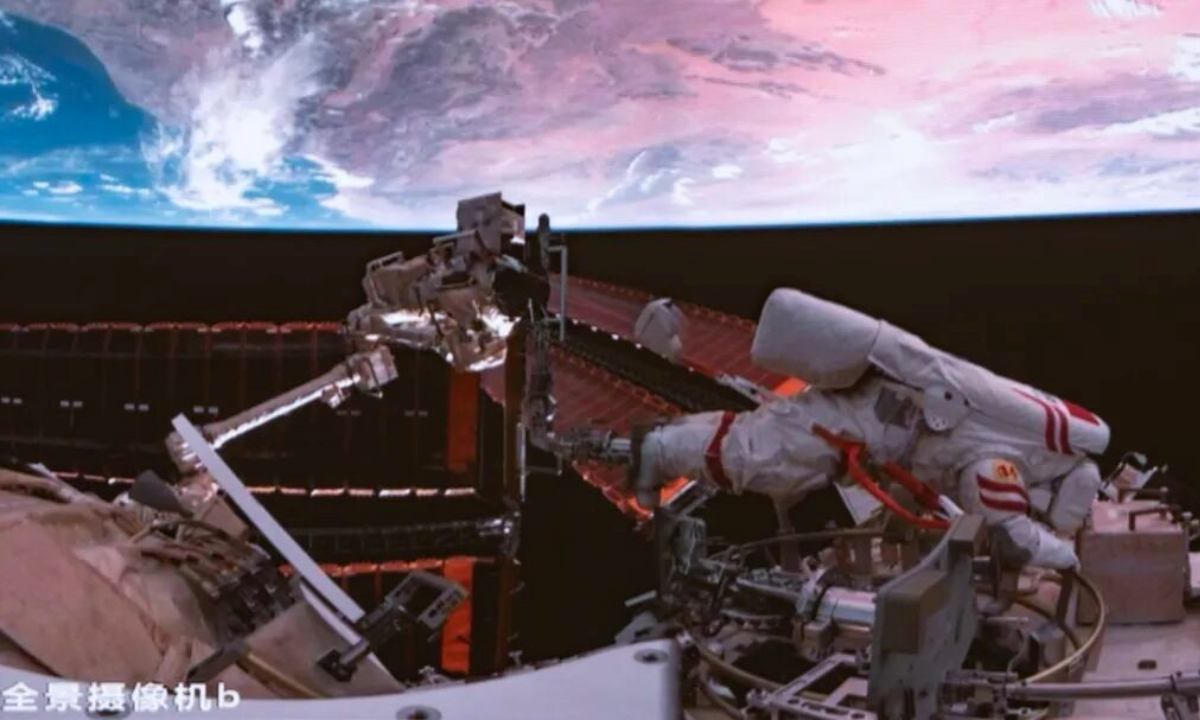
This is an image taken on the evening of September 25 at the Beijing Aerospace Control Center, showing Shenzhou-20 crew member Wang Jie conducting extravehicular operations outside the space station complex. Photo: Xinhua
China has achieved a new milestone in its manned space program, with the country’s first international standard project being officially registered by the International Organization for Standardization (ISO). This represents China’s first successful international standard in the field of manned spaceflight and a breakthrough in global space rule-making.
The standard is expected to provide a “Chinese solution” for the safety of manned space missions and further enhance China’s international influence and voice in the field, according to the China Manned Space Agency (CMSA) on Tuesday.
According to the CMSA, the project — ISO/NP 14620-5 “Space Systems — Safety Requirements — Part 5: Manned Spacecraft” — was proposed by China’s National Technical Committee on Manned Spaceflight Standardization.
Based on extensive research and by drawing on advanced international safety technologies and methodologies, the standard incorporates more than 30 years of safety experience from China’s manned space program, the CMSA said.
It provides unified technical guidance and models for manned spacecraft safety applicable to all countries, setting out safety access conditions for participation in manned space activities.
Serving as the safety baseline and threshold for ensuring safety in manned space missions and developing related systems and payloads, the standard is also expected to facilitate international cooperation on China’s space station.
Wang Ya’nan, chief editor of the Beijing-based Aerospace Knowledge magazine, told the Global Times on Tuesday that proposing such a standard reflects China’s core principle in manned space program — safety and reliability. “China’s approach to manned spaceflight prioritizes safety above all else, which is a defining feature of its space endeavors,” Wang said.
“The development of standards is often rooted in practical experience — a country with limited space capabilities, even if it puts forward standardization proposals, would find it difficult to gain broad international recognition. China, however, has made remarkable achievements in manned spaceflight, especially in the construction and operation of its space station, giving its standards a high degree of credibility and reference value for other countries,” Wang noted.
This initiative also represents a constructive contribution by China’s space program to the world. The expert added that some countries treat such technical methods as confidential and refrain from sharing them openly. Given that space technology is a highly sophisticated field, China’s willingness to put forward a safety standard for international adoption reflects its openness and commitment to shared progress.
According to the CMSA, the standard covers areas including safety management requirements, technical and design verification, and safety standards for in-orbit missions.
It sets top-level safety norms across all stages of a manned space mission — from development and launch to on-orbit operation, return and landing — with the primary goal of protecting human life.
The standard applies to crewed spacecraft, cargo spacecraft, space stations, and related payload products, and it also offers technical guidance for safety design in future lunar exploration programs.
The project team will move forward with the planned drafting and review phases to ensure the standard’s timely publication and implementation, the agency said.
Wang noted that the standard will also have far-reaching implications for future international cooperation.
In joint projects such as those involving China’s space station, or future lunar and deep-space exploration missions, if manned spacecraft are involved, it will be essential for all participants to follow unified safety standards to ensure smooth collaboration. Otherwise, any spacecraft that fails to meet the standard could become a weak link in the overall safety chain. This is the key considerations behind China’s proposal, Wang said.
The standard is also expected to play a vital role in emergency rescue missions, as unified safety rules can help countries coordinate more efficiently in times of crisis, Wang added.
